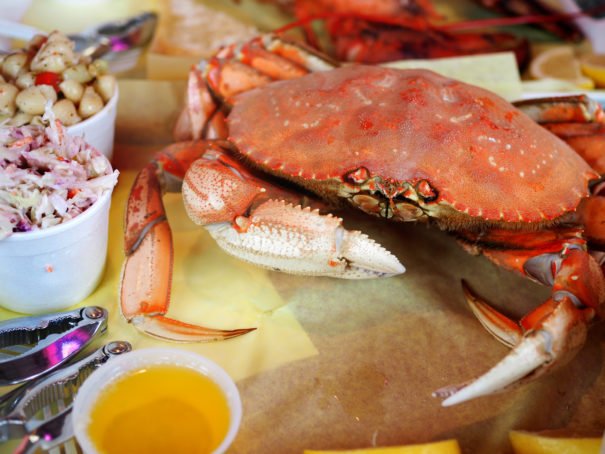
A Victory for Team America, With Help From a Crustacean

A Victory for Team America, With Help From a Crustacean
Dungeness Crab in Oregon
I lace up my shoes and jog into the foggy morning. Seabirds cry and the ocean thunders onto the plain of soggy sand. It’s such a perfect picture of desolate gloom that I sigh. It’s good to be home.
I check my watch and jog faster toward Bandon, Oregon, and Tony’s Crab Shack. Today’s my last chance to find fresh, Oregon-caught Dungeness crab and heal my wounded local pride. This trip, I’ve brought my Malaysian host family home for their first tour of America. Malaysians are foodies, and the Chinese-Malaysians seem to be the most food-obsessed. In their dialect, a common greeting is “Have you eaten yet?”
I can’t let them go home thinking American seafood is red snapper fish sticks, fried razor clams, and chowder. After dinner the previous night, my host father shrugged. “Americans don’t appreciate fresh ingredients,” he surmised. I’ve got to find the Dungeness.
The large Dungeness crab is our state crustacean, placing us along Maryland and Louisiana as the only states to have a designated state shellfish. The deep-sea creatures are a $49.3 million industry here, and are even featured in the 2016 Oregon-based spin-off, Deadliest Catch: Dungeon Cove. The crabs measure six to eight inches across the shell, not including their armored legs and heavy claws. Alive, they’re an ugly purple-brown, but when cooked they turn a bright pumpkin orange.
I’m in luck. Robert is outside getting ready to open Tony’s Crab Shack, a small building attached to a bait and tackle shop. Robert says it’s not the main crabbing season, December to March, but he does have Dungeness, caught that morning in the Coos River. I make the first order of the day and speed back over the sand.
The crab is nearly ready when we arrive back at the Shack, its legs splayed out, hot and steaming on a waxed paper tray with all the American fixings—mayonnaise-rich coleslaw and pasta salad, a thick wedge of sourdough, a side of melted butter. The shack is cramped, the walls invisible under layers of glowing beer signs, tackle, buoys and ropes, and kitschy t-shirts that read, “I have a crabby attitude,” and “I’m a keeper.” Live crabs and lobsters claw at the glass of their tanks.
My host family has eyes only for the brilliantly-colored crab. They pull off its hard shell and marvel at the sweet ivory meat, so tender it’s juicy. “This is good,” my host father says, pointing messy fingers at the carcass. I fist pump for America.